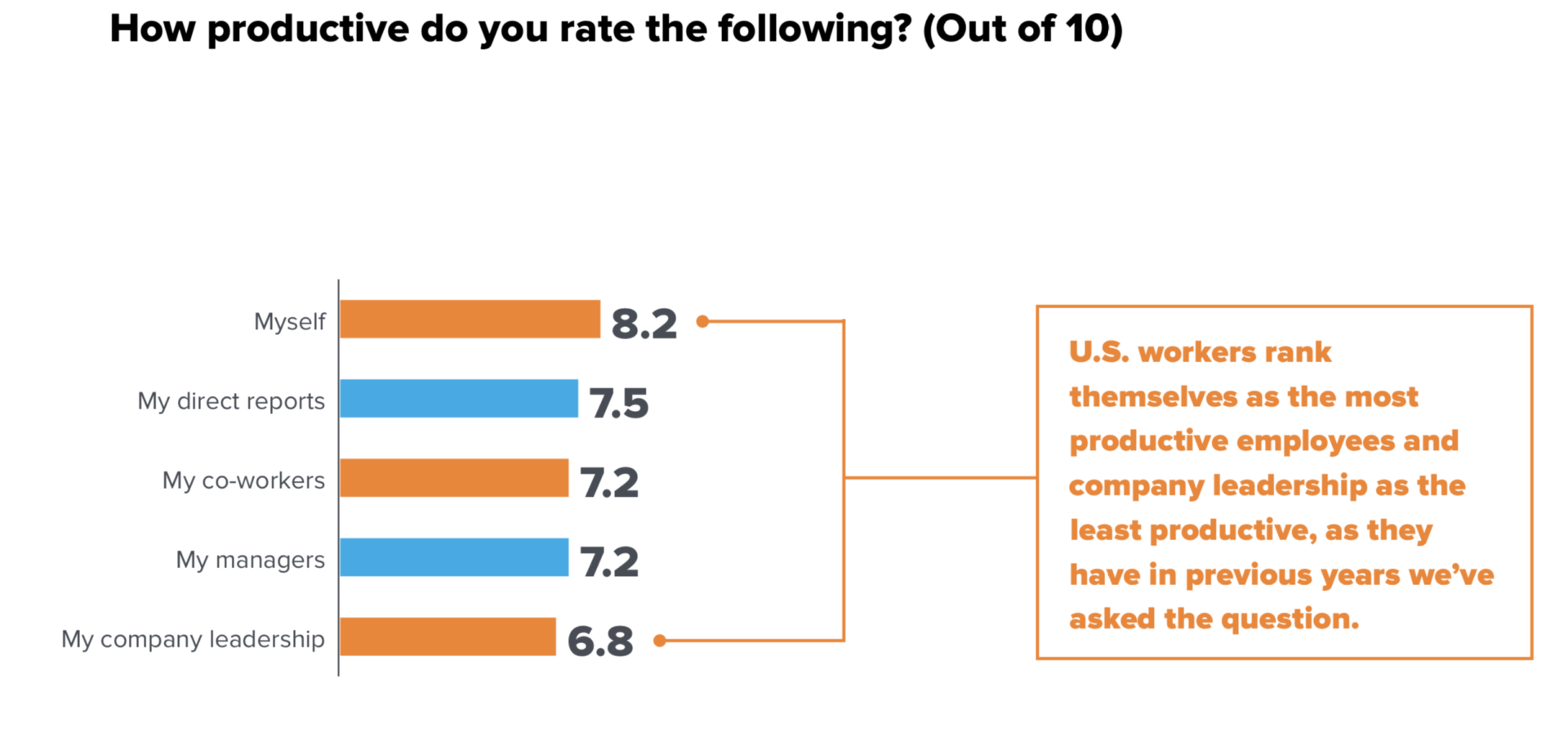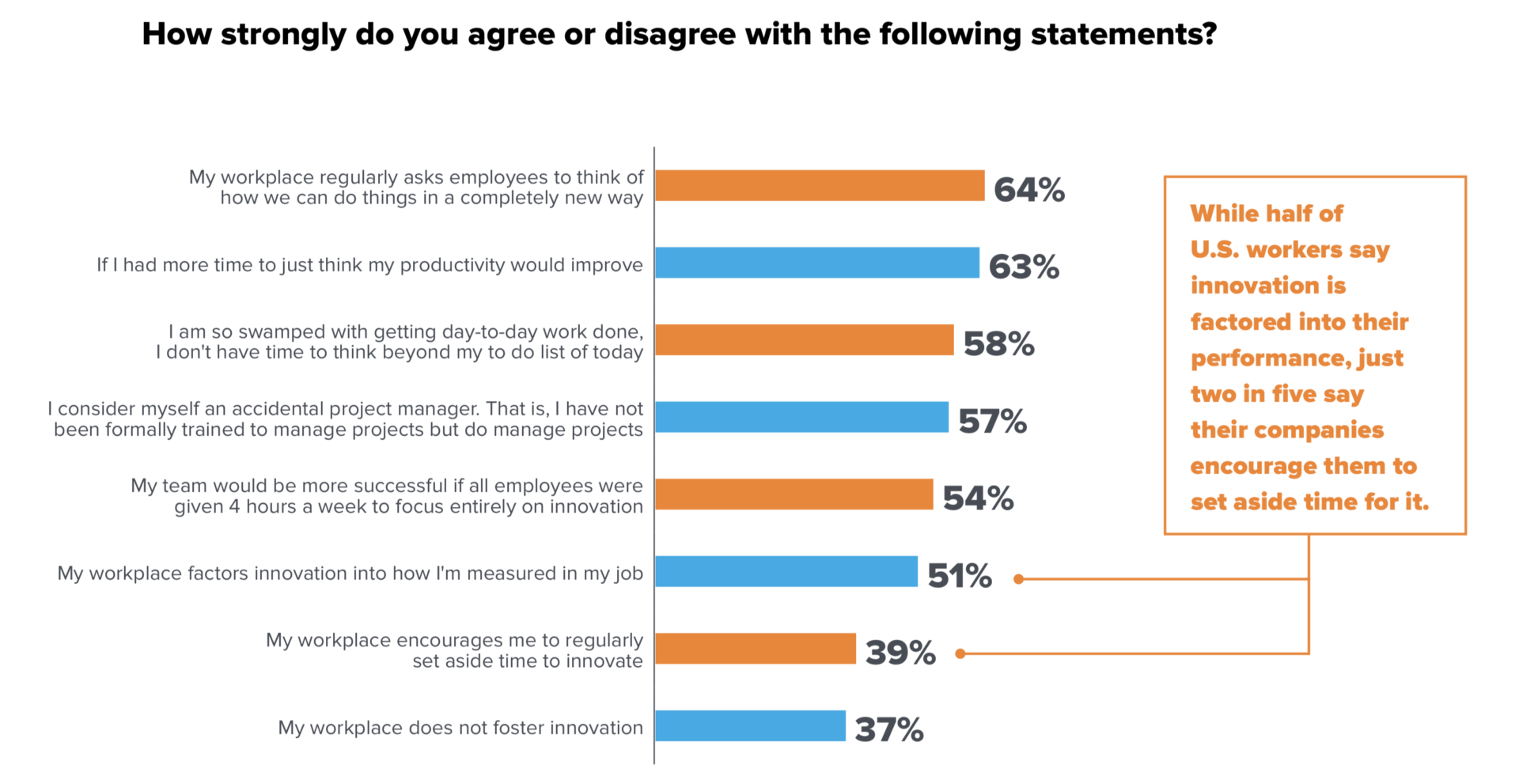
If I were a betting man, I’d bet you’ve recently read a headline that promises to make you more productive in no time at all. Maybe, just maybe, if you try 31 things that successful people are doing, you’ll be 10x more successful. In 2017, there were 8 proven ways to increase productivity. This year there were ten. By 2019, we will have fourteen verifiable ways to increase productivity that are relatively similar to what you read in 2017.
If, according to the Internet, it takes you—a single person—anywhere from eight to 31 ways to be more productive, how many strategies or approaches does an enterprise marketing team need to try? 80? 150? More?
The first page of Google results can make productivity look like an easy nut to crack. But it’s not, and we all know that from real experience, especially when it comes to an enterprise marketing team.
Thankfully, there are organizations exploring the questions we are punching into Google search. That’s exactly what our friends from Workfront did in their annual State of Work report. This report is half a decade in the making. Every year it reveals new things I don’t expect to find but that are entirely intuitive and somehow—even though we see and feel them every day—overlooked.
Here are 5 of my favorite takeaways from the report.
Productivity Takeaway #1: We’re Skeptical of Our Colleagues
Does it surprise you to know that in the U.S., individual workers like you and I believe we are more productive than our co-workers? We also think we are more productive than company leadership. We rate ourselves as being the most productive (8.2 on a 10-point scale), our co-workers and manager as being less productive (7.2), and company leadership as being the least productive (6.8).

This is, of course, impossible and colored by proximity bias. We believe those to whom we are closest are more productive because we are more familiar with what they actually do all day. The State of Work report supports this point too: 86% of us don’t have a clear idea what our colleagues are working on.
86% of workers don’t have a clear idea what our colleagues are working on yet we believe we are more productive than they are @workfront
Click To Tweet
Productivity Takeaway #2: Finding Time to Innovate is Hard
One of the great riddles in today’s workplace is the idea that if we could think differently about how to approach our work, we’d be more productive. It’s a solid theory, but in reality, it’s a different story. Why? For starters, while 64% of enterprises ask employees to find new ways to do things differently, only 40% of workplaces actually encourage employees to set aside time to innovate. New ideas can poof into existence. That happens. But, as much as I wish this weren’t the case, they don’t mature without development and support, which both require time.
64% of enterprises ask employees to find new ways to do things differently, but only 40% of workplaces actually encourage employees to set aside time to innovate @workfront
Click To Tweet

Employers are beginning to use innovation as an assessment tool for their teams. More than half of employees say innovation is factored into their job performance, but only 39% say their companies encourage them to set aside time for it. Complicating the innovation riddle further are gender and age differences. Men are more likely to say their workplace encourages them to regularly set aside time to innovate while women are more likely to say they become accidental project managers at work, which prevents them from having time to innovate.
More than half of employees say innovation is factored into their job performance, yet only 39% say their companies encourage them to set aside time for it via @workfront
Click To Tweet
Productivity Takeaway #3: We Haven’t Eliminated Unnecessary Interruptions
You might be skeptical to hear me say this (hey, the report says you might be skeptical). Most of us know what we’re supposed to be doing at work. But (obvious spoiler alert), it’s hard for us to fulfill those responsibilities because of interruptions and distractions that keep us from performing our jobs.
What’s top of that distraction list for you? Email mania? Unnecessary meetings? It’s different for all of us. According to the State of Work report, 45% of Baby Boomers say they spend a greater percentage of their week on their primary job responsibilities than Gen X (38%) and Millennials (34%). Millennials are more likely than Baby Boomers to say the biggest barrier in the way of their productivity is the lack of standardized processes.
Millennials are more likely than Baby Boomers to say the biggest barrier in the way of their productivity is the lack of standardized processes. via @workfront
Click To Tweet
Unnecessary interruptions still plague enterprise teams, so much so that 45% of us would rather go to the DMV, a destination not known for having a stellar customer experience than sit through a pointless meeting. And, I love this one: baby Boomers would rather forget to brush their teeth in the morning than get 50 pointless work emails.
45% of U.S. workers would rather go to the DMV, a destination not known for having a stellar customer experience than sit through a pointless meeting via @workfront
Click To Tweet
Productivity Takeaway #4: We Believe in the Promises of Automation And Humans
I have written a few posts about marketing automation. I believe automation is good, not evil, if done in a smart and purposeful way. Here’s a takeaway from the State of Work report that fascinates me: on average, workers say 37% of the day-to-day aspects of their job are automated and (here’s the fascinating part) that only 40% of their day should be automated. Are we already nearing the point of automation saturation?
I’m curious to see where this goes. If enterprises are more bullish about automation, I wonder where the point of reversal is. Because even though more than two-thirds of us believe we will be competing with robots, machines or artificial intelligence for our jobs in the not-too-distant future, 93% of us believe a human touch will always have a role in the workplace.
More than two-thirds of us believe we soon will be competing with robots, machines and/or artificial intelligence for our jobs, but 93% of us believe there will always be the need for a human touch in the workplace @workfront
Click To Tweet
Productivity Takeaway #5: We Aren’t Aligned on the “Right” Suite of Digital Tools
For me, this takeaway is no surprise. Almost two-thirds of U.S. workers say their enterprise is undergoing a digital transformation, but we aren’t aligned on how that transformation takes form. This is due, in part, to the fact that we have different digital needs and work styles: Millennials (51%) are more likely than Gen X (46%) and Baby Boomers (40%) to say their team is requesting more tools to manage work, but executives aren’t on board with those requests.
Finding a way to manage work, whether through a digital solution or other, is productivity glue. Every month, nearly half of us have no idea that we’ve had work assigned to us. We miss the fact that we’ve been given an assignment entirely. Men are more likely than women to say they are unaware work has been assigned to them.
Men are more likely than women to say they are unaware work has been assigned to them. @workfront
Click To Tweet
Download the entire State of the Work report from our friends at Workfront. Are there any takeaways in the study that tell you a different story about enterprise productivity?
The post Are You Overlooking These 5 Facts Impacting Your Marketing Team’s Productivity? appeared first on Convince and Convert: Social Media Consulting and Content Marketing Consulting.
from Convince and Convert: Social Media Consulting and Content Marketing Consulting https://ift.tt/2qJoG3E

No comments:
Post a Comment